Showing Spotlights 2321 - 2328 of 2779 in category All (newest first):
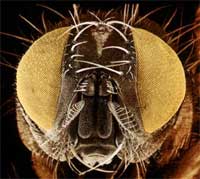 Looking at Nature as a successful design lab with millions of years of research experience, it is quite surprising that scientists haven't tried harder to copy some of Nature's more successful and impressive design blueprint. The list of actual commercialized biodesign-inspired products is very short. The most famous is Velcro, the hook-loop fastener that was invented in 1945 by Swiss engineer, George de Mestral. The idea came to him after he took a close look at the burrs (seeds) of burdock which kept sticking to his clothes and his dog's fur on their daily summer walks in the Alps. He examined their condition and saw the possibility of binding two materials reversibly in a simple fashion. And then, of course, there are the Wright Brothers, who modeled their planes on the structure of bird wings. Today, there are quite a number of terms such as bionics, biomimetics, biognosis, biomimicry, or even 'bionical creativity engineering' that refer to more or less the same thing: the application of methods and systems found in Nature to the study and design of engineering systems and modern technology. The use of design concepts adapted from Nature is a promising new route to the development of advanced materials and increasingly nanotechnology researchers find nanostructures a useful inspiration for overcoming their design and fabrication challenges. Because biological structures are the result of hundreds of thousands of years of evolution, their designs possess many unique merits that would be difficult to achieve by a complete artificial simulation. However, utilizing them as biotemplates and converting them to inorganic material could be a highly reproducible and low-cost process for fabricating complex nanostructures with unique functions. Complex functional systems are still out of reach but the replication of biological structures is making good progress. A recent example is the fabrication of antireflection nanostructures by replicating fly eyes.
Looking at Nature as a successful design lab with millions of years of research experience, it is quite surprising that scientists haven't tried harder to copy some of Nature's more successful and impressive design blueprint. The list of actual commercialized biodesign-inspired products is very short. The most famous is Velcro, the hook-loop fastener that was invented in 1945 by Swiss engineer, George de Mestral. The idea came to him after he took a close look at the burrs (seeds) of burdock which kept sticking to his clothes and his dog's fur on their daily summer walks in the Alps. He examined their condition and saw the possibility of binding two materials reversibly in a simple fashion. And then, of course, there are the Wright Brothers, who modeled their planes on the structure of bird wings. Today, there are quite a number of terms such as bionics, biomimetics, biognosis, biomimicry, or even 'bionical creativity engineering' that refer to more or less the same thing: the application of methods and systems found in Nature to the study and design of engineering systems and modern technology. The use of design concepts adapted from Nature is a promising new route to the development of advanced materials and increasingly nanotechnology researchers find nanostructures a useful inspiration for overcoming their design and fabrication challenges. Because biological structures are the result of hundreds of thousands of years of evolution, their designs possess many unique merits that would be difficult to achieve by a complete artificial simulation. However, utilizing them as biotemplates and converting them to inorganic material could be a highly reproducible and low-cost process for fabricating complex nanostructures with unique functions. Complex functional systems are still out of reach but the replication of biological structures is making good progress. A recent example is the fabrication of antireflection nanostructures by replicating fly eyes.
Dec 19th, 2007
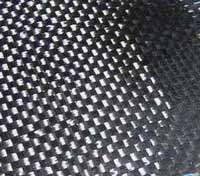 Even the smartest scientists can still learn from the dumbest animals - at least as far as materials science is concerned. Take for instance marine glass sponges such as the hexactinellid sponge Euplectella sp. which are considered to be one of the most primitive animals in existence. Nevertheless, they produce integrated composite materials with outstanding mechanical properties and researchers are interested in finding out how they do that and how this natural process could be copied and adapted for use in the fabrication of synthetic composite materials. Euplectella's bioglass filaments, for instance, exhibit a rather complex design, thus ensuring the control of both mechanical and chemical interfaces between the different components to overcome the brittleness of the main constituent material, glass. Scientists have found that the amazing properties of many biological high-performance materials such as bone or shells are a result of the structure and the interplay of the constituents. In other words, the hierarchical structure of composites determines their material properties, and not the type of the composite's constituents. Researchers in Germany have now reported a biomimetic approach for the fast fabrication of hierarchically structured peptide-silica fibers, mimicking the bio-silicification process of natural glass fibers.
Even the smartest scientists can still learn from the dumbest animals - at least as far as materials science is concerned. Take for instance marine glass sponges such as the hexactinellid sponge Euplectella sp. which are considered to be one of the most primitive animals in existence. Nevertheless, they produce integrated composite materials with outstanding mechanical properties and researchers are interested in finding out how they do that and how this natural process could be copied and adapted for use in the fabrication of synthetic composite materials. Euplectella's bioglass filaments, for instance, exhibit a rather complex design, thus ensuring the control of both mechanical and chemical interfaces between the different components to overcome the brittleness of the main constituent material, glass. Scientists have found that the amazing properties of many biological high-performance materials such as bone or shells are a result of the structure and the interplay of the constituents. In other words, the hierarchical structure of composites determines their material properties, and not the type of the composite's constituents. Researchers in Germany have now reported a biomimetic approach for the fast fabrication of hierarchically structured peptide-silica fibers, mimicking the bio-silicification process of natural glass fibers.
Dec 18th, 2007
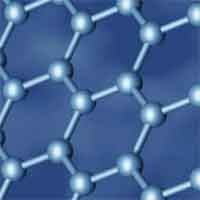 As a critical component of optoelectronic devices, transparent conductive coatings pervade modern technology. The most widely used standard coating is indium tin oxide (ITO), used in nearly all flat panel displays and microdisplays. Causing problems for manufacturers, though, Indium is expensive and scarce and demand is increasing. From the depressed levels of $60/kg in 2002, indium prices rose to over $1,000/kg during the summer of this year. Recently, prices have fallen back to between $400-$500/kg. But, geologists say the cost of indium may not matter soon, because the earth's supply of this element could be gone within just a few years. In addition to the limited availability of Indium there are other reasons that make ITO and other metal oxides such as FTO (fluorine tin oxide) increasingly problematic for electronics manufacturers: the instability of these metal oxides in the presence of acid or base; their susceptibility to ion diffusion into polymer layers; their limited transparency in the near-infrared region; and lastly, the current leakage of FTO devices caused by FTO structure defects. This has made the search for novel transparent electrode materials with good stability, high transparency and excellent conductivity a crucial goal for optoelectronic researchers. Recent work by researchers in Germany exploits ultra-thin transparent conductive graphene films as window electrodes in solar cells.
As a critical component of optoelectronic devices, transparent conductive coatings pervade modern technology. The most widely used standard coating is indium tin oxide (ITO), used in nearly all flat panel displays and microdisplays. Causing problems for manufacturers, though, Indium is expensive and scarce and demand is increasing. From the depressed levels of $60/kg in 2002, indium prices rose to over $1,000/kg during the summer of this year. Recently, prices have fallen back to between $400-$500/kg. But, geologists say the cost of indium may not matter soon, because the earth's supply of this element could be gone within just a few years. In addition to the limited availability of Indium there are other reasons that make ITO and other metal oxides such as FTO (fluorine tin oxide) increasingly problematic for electronics manufacturers: the instability of these metal oxides in the presence of acid or base; their susceptibility to ion diffusion into polymer layers; their limited transparency in the near-infrared region; and lastly, the current leakage of FTO devices caused by FTO structure defects. This has made the search for novel transparent electrode materials with good stability, high transparency and excellent conductivity a crucial goal for optoelectronic researchers. Recent work by researchers in Germany exploits ultra-thin transparent conductive graphene films as window electrodes in solar cells.
Dec 17th, 2007
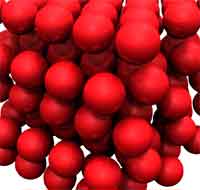 As an emerging science, nanotoxicology is expanding the boundaries of traditional toxicology from a testing and auxiliary science to a new discipline where toxicological knowledge of nanomaterials can be put to constructive use in therapeutics as well as the development of new and better biocompatible materials. Until now, though, no one has been able to pin-point which properties determines or influences the inherent hazards of nanoparticles. Now, scientists have developed a framework that can be applied to a suggested hazard identification approach and is aimed at identifying causality between inherent physical and chemical properties and observed adverse effects reported in the literature.
As an emerging science, nanotoxicology is expanding the boundaries of traditional toxicology from a testing and auxiliary science to a new discipline where toxicological knowledge of nanomaterials can be put to constructive use in therapeutics as well as the development of new and better biocompatible materials. Until now, though, no one has been able to pin-point which properties determines or influences the inherent hazards of nanoparticles. Now, scientists have developed a framework that can be applied to a suggested hazard identification approach and is aimed at identifying causality between inherent physical and chemical properties and observed adverse effects reported in the literature.
Dec 14th, 2007
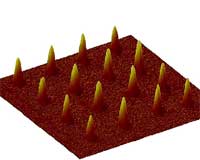 Past studies of photo-responsive proteins have generally dwelled on applications for energy-saving computer displays, light-based computing or computer memory. The general theme in the research tends to rely on the controllable and quick state change of the protein. But, the ability of the protein to actually incite a physical change in a composite macroscopic system has been largely unexplored. Harnessing this ability of the protein to incite change in a polymeric material could have broad implications in the field of biomedical and materials engineering. Getting bacteriorhodopsin to 'play ball' with other bulk materials could render those materials sensitive to a light. As a stimulus, light is often much easier to control than those typically explored by researchers such as bulk pH, temperature or electric fields.
Past studies of photo-responsive proteins have generally dwelled on applications for energy-saving computer displays, light-based computing or computer memory. The general theme in the research tends to rely on the controllable and quick state change of the protein. But, the ability of the protein to actually incite a physical change in a composite macroscopic system has been largely unexplored. Harnessing this ability of the protein to incite change in a polymeric material could have broad implications in the field of biomedical and materials engineering. Getting bacteriorhodopsin to 'play ball' with other bulk materials could render those materials sensitive to a light. As a stimulus, light is often much easier to control than those typically explored by researchers such as bulk pH, temperature or electric fields.
Dec 13th, 2007
 Given past revelations of previously top secret military technology programs there is a good chance that some 'black' projects somehwere tinker with advanced nanotechnology applications. But, you keepers of military secrets, relax. This Spotlight is not a piece of investigative journalism into the world of military black projects. It is the first in a series of eight scenarios that have just been published by the Center for Responsible Nanotechnology (CRN) - and we here at Nanowerk have posted the entire nanotechnology scenario project here. CRN's scenarios depict various versions of a near-future world into which transformative manufacturing concepts may emerge. Across eight separate storylines, an international team of policy, technology, and economic specialists organized by CRN imagined in detail a range of plausible, challenging events - from pandemics to climate crises to international conflicts - to see how they might affect the development of advanced nanotechnology over the next 15 years. Please keep in mind that this and the others seven scenarios are NOT predictions but fiction. CRN intends the scenarios to provide a springboard for discussion of molecular manufacturing policies and societal responses. While each scenario can be understood individually, the real value of the process comes from the comparison of multiple scenarios. A strategic response that appears robust in one scenario may be dangerous in another; an organization, community, or polity using these scenarios to consider how to handle the emergence of molecular manufacturing should strive for responses that are viable across multiple scenarios.
Given past revelations of previously top secret military technology programs there is a good chance that some 'black' projects somehwere tinker with advanced nanotechnology applications. But, you keepers of military secrets, relax. This Spotlight is not a piece of investigative journalism into the world of military black projects. It is the first in a series of eight scenarios that have just been published by the Center for Responsible Nanotechnology (CRN) - and we here at Nanowerk have posted the entire nanotechnology scenario project here. CRN's scenarios depict various versions of a near-future world into which transformative manufacturing concepts may emerge. Across eight separate storylines, an international team of policy, technology, and economic specialists organized by CRN imagined in detail a range of plausible, challenging events - from pandemics to climate crises to international conflicts - to see how they might affect the development of advanced nanotechnology over the next 15 years. Please keep in mind that this and the others seven scenarios are NOT predictions but fiction. CRN intends the scenarios to provide a springboard for discussion of molecular manufacturing policies and societal responses. While each scenario can be understood individually, the real value of the process comes from the comparison of multiple scenarios. A strategic response that appears robust in one scenario may be dangerous in another; an organization, community, or polity using these scenarios to consider how to handle the emergence of molecular manufacturing should strive for responses that are viable across multiple scenarios.
Dec 12th, 2007
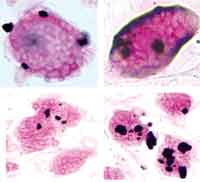 Carbon nanotubes (CNTs) have shown promise as an important new class of multifunctional building blocks and innovative tools in a large variety of nanotechnology applications, ranging from nanocomposite materials through nanoelectronics to biomedical devices (e.g. gene and drug carriers). The recent rapid development in nanotechnology has renewed the pressing demand for large-scale production of CNTs for potential applications in commercial products. The number of industrial-scale facilities for the increasingly low-cost production of multi-walled carbon nanotubes (MWCNTs) continues to grow, and with that the professional and public exposure to MWCNTs is expected to increase significantly in the coming years. Owing to their unusual one-dimensional hollow nanostructure and unique physicochemical properties, CNTs are particularly useful as novel drug delivery tools and imaging agents. However, such biomedical, and many other related, applications will not be realized if there is no proper assessment of the potential hazards of CNTs to humans and other biological systems. This situation prompted a group of researchers to carry out the first genotoxicity study of nanomaterials. Although the health effects of nanomaterials have attracted considerable attention, the scientific community has thus far focused primarily on the studies of nanomaterials toxicity at the cellular level. Very little is known about the toxicity at the molecular level, or genotoxicity, of nanomaterials in mammalian cells. Researchers at the University of Dayton have assessed the DNA damage response to MWCNTs in mouse embryonic stem cells (ES). This new work emphasizes the importance of careful scrutiny of the genotoxicity of nanomaterials.
Carbon nanotubes (CNTs) have shown promise as an important new class of multifunctional building blocks and innovative tools in a large variety of nanotechnology applications, ranging from nanocomposite materials through nanoelectronics to biomedical devices (e.g. gene and drug carriers). The recent rapid development in nanotechnology has renewed the pressing demand for large-scale production of CNTs for potential applications in commercial products. The number of industrial-scale facilities for the increasingly low-cost production of multi-walled carbon nanotubes (MWCNTs) continues to grow, and with that the professional and public exposure to MWCNTs is expected to increase significantly in the coming years. Owing to their unusual one-dimensional hollow nanostructure and unique physicochemical properties, CNTs are particularly useful as novel drug delivery tools and imaging agents. However, such biomedical, and many other related, applications will not be realized if there is no proper assessment of the potential hazards of CNTs to humans and other biological systems. This situation prompted a group of researchers to carry out the first genotoxicity study of nanomaterials. Although the health effects of nanomaterials have attracted considerable attention, the scientific community has thus far focused primarily on the studies of nanomaterials toxicity at the cellular level. Very little is known about the toxicity at the molecular level, or genotoxicity, of nanomaterials in mammalian cells. Researchers at the University of Dayton have assessed the DNA damage response to MWCNTs in mouse embryonic stem cells (ES). This new work emphasizes the importance of careful scrutiny of the genotoxicity of nanomaterials.
Dec 11th, 2007
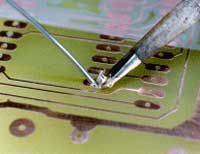 The Bronze Age technique of soldering - a process in which two or more metal items are joined together by melting and flowing a filler metal into the joint - seems to be working just fine in the nanotechnology age. Researchers in California have developed an alternative method, effectively a miniaturization of soldering, to electron beam lithography (EBL) which, so far, is the method of choice for making electrical contact to nanostructures is. Carbon nanotubes, for instance, have been soldered together by using electron beam deposited gold molecules. There is a downside to using EBL as an industrial fabrication process: commercially used dedicated e-beam writing systems are very expensive (millions of dollars per unit), the process is complex, time-consuming and not really suitable for high-volume manufacturing, and there is a risk of sample contamination build-up on the samples. Other lithography-free contacting techniques such as shadow masks have been attempted, but they have their own drawbacks and have not been widely used. The new nano-soldering technique allows to make submicron sized, Ohmic contacts to nanostructures of even single atom thickness. The technique is simple, inexpensive, rapid, and entirely avoids sample contamination.
The Bronze Age technique of soldering - a process in which two or more metal items are joined together by melting and flowing a filler metal into the joint - seems to be working just fine in the nanotechnology age. Researchers in California have developed an alternative method, effectively a miniaturization of soldering, to electron beam lithography (EBL) which, so far, is the method of choice for making electrical contact to nanostructures is. Carbon nanotubes, for instance, have been soldered together by using electron beam deposited gold molecules. There is a downside to using EBL as an industrial fabrication process: commercially used dedicated e-beam writing systems are very expensive (millions of dollars per unit), the process is complex, time-consuming and not really suitable for high-volume manufacturing, and there is a risk of sample contamination build-up on the samples. Other lithography-free contacting techniques such as shadow masks have been attempted, but they have their own drawbacks and have not been widely used. The new nano-soldering technique allows to make submicron sized, Ohmic contacts to nanostructures of even single atom thickness. The technique is simple, inexpensive, rapid, and entirely avoids sample contamination.
Dec 10th, 2007
 Looking at Nature as a successful design lab with millions of years of research experience, it is quite surprising that scientists haven't tried harder to copy some of Nature's more successful and impressive design blueprint. The list of actual commercialized biodesign-inspired products is very short. The most famous is Velcro, the hook-loop fastener that was invented in 1945 by Swiss engineer, George de Mestral. The idea came to him after he took a close look at the burrs (seeds) of burdock which kept sticking to his clothes and his dog's fur on their daily summer walks in the Alps. He examined their condition and saw the possibility of binding two materials reversibly in a simple fashion. And then, of course, there are the Wright Brothers, who modeled their planes on the structure of bird wings. Today, there are quite a number of terms such as bionics, biomimetics, biognosis, biomimicry, or even 'bionical creativity engineering' that refer to more or less the same thing: the application of methods and systems found in Nature to the study and design of engineering systems and modern technology. The use of design concepts adapted from Nature is a promising new route to the development of advanced materials and increasingly nanotechnology researchers find nanostructures a useful inspiration for overcoming their design and fabrication challenges. Because biological structures are the result of hundreds of thousands of years of evolution, their designs possess many unique merits that would be difficult to achieve by a complete artificial simulation. However, utilizing them as biotemplates and converting them to inorganic material could be a highly reproducible and low-cost process for fabricating complex nanostructures with unique functions. Complex functional systems are still out of reach but the replication of biological structures is making good progress. A recent example is the fabrication of antireflection nanostructures by replicating fly eyes.
Looking at Nature as a successful design lab with millions of years of research experience, it is quite surprising that scientists haven't tried harder to copy some of Nature's more successful and impressive design blueprint. The list of actual commercialized biodesign-inspired products is very short. The most famous is Velcro, the hook-loop fastener that was invented in 1945 by Swiss engineer, George de Mestral. The idea came to him after he took a close look at the burrs (seeds) of burdock which kept sticking to his clothes and his dog's fur on their daily summer walks in the Alps. He examined their condition and saw the possibility of binding two materials reversibly in a simple fashion. And then, of course, there are the Wright Brothers, who modeled their planes on the structure of bird wings. Today, there are quite a number of terms such as bionics, biomimetics, biognosis, biomimicry, or even 'bionical creativity engineering' that refer to more or less the same thing: the application of methods and systems found in Nature to the study and design of engineering systems and modern technology. The use of design concepts adapted from Nature is a promising new route to the development of advanced materials and increasingly nanotechnology researchers find nanostructures a useful inspiration for overcoming their design and fabrication challenges. Because biological structures are the result of hundreds of thousands of years of evolution, their designs possess many unique merits that would be difficult to achieve by a complete artificial simulation. However, utilizing them as biotemplates and converting them to inorganic material could be a highly reproducible and low-cost process for fabricating complex nanostructures with unique functions. Complex functional systems are still out of reach but the replication of biological structures is making good progress. A recent example is the fabrication of antireflection nanostructures by replicating fly eyes.
 Subscribe to our Nanotechnology Spotlight feed
Subscribe to our Nanotechnology Spotlight feed





